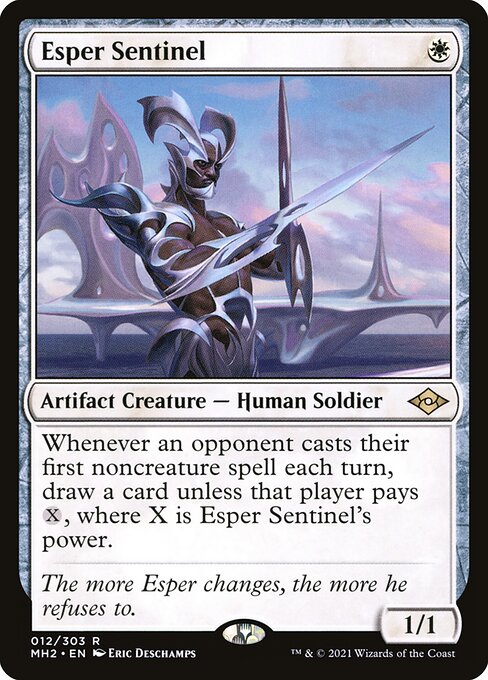Deck & Commander Strategies

Brion Stoutarm
Focuses on generating value through combat damage and using fling effects to deal damage by sacrificing creatures, aiming for direct damage wins.

Elas il-Kor, Sadistic Pilgrim
Utilizes life gain and drain mechanics triggered by creatures entering and dying to slowly chip away at opponents’ life totals.

Wilhelt, the Rotcleaver
Builds a growing army of zombies through token generation, aiming to overwhelm opponents with numbers and synergistic zombie tribal effects.

Svella, Ice Shaper
Ramp-heavy deck that accelerates mana production to cast large creatures and spells, controlling the board with big threats.
Gameplay Insights
- 1
The Esper Sentinel created a taxing effect that influenced players' spellcasting choices, fostering a subtle political dynamic early in the game.
- 2
Players balanced table cooperation versus individual advantage, particularly in how to handle the Esper Sentinel’s triggered ability.
- 3
Wilhelt’s zombie token generation steadily increased board presence, pressuring opponents and enabling synergy with sacrifice and death triggers.
- 4
Ramp spells and mana acceleration allowed Svella to deploy big threats early, aiming to control the pace of the game.
- 5
Brion Stoutarm’s fling synergy suggested a potential for explosive damage in the mid-to-late game, requiring opponents to manage his board carefully.
Notable Cards
-

Esper Sentinel
-

Wilhelt, the Rotcleaver
-

Elas il-Kor, Sadistic Pilgrim
-

Brion Stoutarm
-

Svella, Ice Shaper
-

Swiftfoot Boots
-

Temple of Silence
-

Arcane Signet
Gameplay Summary
The game began with players introducing their beloved but not necessarily optimized Commander decks, setting a casual and fun atmosphere.
Early turns involved ramping mana and setting up board presence, with Svella, Ice Shaper focusing on ramp and big creatures, Wilhelt, the Rotcleaver establishing a zombie army, and Elas il-Kor, Sadistic Pilgrim leveraging life gain and drain effects.
Brion Stoutarm aimed to utilize his fling synergy for damage.
A key early interaction emerged from an Esper Sentinel on the battlefield, taxing players for their first non-creature spell each turn, creating a minor political dynamic and affecting spellcasting decisions. As the game progressed, players carefully balanced cooperation and competition, illustrated by table agreements around paying the Esper Sentinel's tax or letting the controller draw cards.
Players deployed key ramp spells and creatures to escalate board development, with Wilhelt steadily assembling zombies and Elas il-Kor gaining value from creatures dying and entering.
Brion Stoutarm’s strategy hinted at fling damage potential, setting up for mid-to-late game combos or damage bursts.
The game’s tempo revolved around managing resources, adapting to board states, and leveraging each deck’s synergies to push towards their respective win conditions.
























![Budget Brews from Dominaria United [Commander VS 307] | Magic: the Gathering Commander Gameplay thumbnail](https://i.ytimg.com/vi/sdB8Qr2w2Go/sddefault.jpg)






![Ep 1: Jarred v Jedit v Elas v Jaxis commander / [EDH gameplay] thumbnail](https://i.ytimg.com/vi/fOXepOqTRcA/sddefault.jpg)



![Commander VS S13E2: Sedris vs Brion vs Licia vs Tetzimoc [EDH] thumbnail](https://i.ytimg.com/vi/oamJ14brbZ8/sddefault.jpg)















